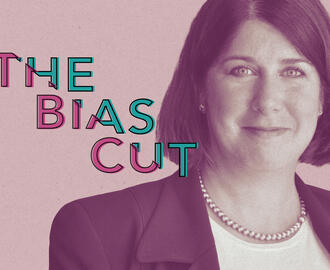Ideas Made to Matter
Gender
3 research papers point to new approaches in employment equity
By
The glass ceiling persists. And there’s no single explanation why, or single way to break it. There is no shortage of articles and statistics pointing to the challenges that women face in the corporate world, from earning equal wages to securing leadership roles to earning the respect of employees and board members alike. A recent New York Times article, for example, featured personal stories from several women who made it to the No. 2 position at global companies but, for a variety of reasons, did not get the top job.
The trouble is that the glass ceiling, like dark matter in physics, cannot be observed, said Roberto Fernandez, a professor of organization studies at MIT Sloan. We know it’s there, but we’re not sure what’s causing it to endure.
“If you ask most people, ‘What’s a glass ceiling?’ it’s associated with an invisible internal promotion barrier,” Fernandez said. “How do we rule in or out other suspects?”
In three recent papers, Fernandez has unearthed surprising insights about gender equity in hiring and pay, insights that suggest that eliminating the glass ceiling needs more than a focus on promotion and equity in executive roles — it requires a widening of the candidate pools throughout the company.
Both supply and demand play a role
One of the biggest issues in investigating gender bias, Fernandez said, is that both supply-side and demand-side factors are likely at play.
Demand-side factors reflect employer behavior: double standards, the enforcement of stereotypes in the screening process, and preferential treatment of male candidates. Supply-side factors reflect employee behavior, such as one’s self-assessment of competence and qualifications for a certain role. Think of the Lean In movement, founded by Facebook COO Sheryl Sandberg, which encourages women to advocate for their own professional advancement.
The most recent paper [PDF], co-authored by Santiago Campero, PhD ’16, SM ’13, of HEC Montreal, looked at a database of candidates for jobs at 441 high-tech firms. Equalizing the hiring rates — that is, giving men and women the same 50-50 chance of getting hired — kept the glass ceiling in place, Fernandez said. In other words, female candidates were still sorted into lower-level positions.
Meanwhile, accounting for screening discrimination but redistributing male and female candidates across the company hierarchy “dramatically flattens” the glass ceiling pattern, he said.
“Whatever else is going on, policies of outreach that allow men and women to apply in more equal proportion are going to have more bang for the buck than screening discrimination or bias reduction,” Fernandez said.
Being considered without “leaning in”
A second paper, co-authored by Isabel Fernandez-Mateo, PhD ’04, of the London Business School, examined the work of an executive search firm in the United Kingdom from 2005 to 2009. This research found that candidate pools include more women when headhunters select candidates than when candidates apply on their own.
“Women are being considered for jobs without having to ‘lean in,’” Fernandez said. “At least in this setting, women are outperforming the external baseline. They are doing better, essentially, than if the intermediary were not involved.”
What’s more, though women are less likely to make the short list of candidates who are interviewed for an executive role, they are just as likely to be hired if they make this short list. Women are also much more likely to be considered or hired by a company using an executive search firm, even though that does represent an added cost to the firm, than by a company filling a position on its own with either an external or internal candidate.
These conclusions show that efforts to “bend the pipeline” by requiring executive headhunters to include a certain percentage of women on their short lists — in other words, by changing the demand side — may de facto already be happening, Fernandez said. Such efforts include the Paradigm for Parity coalition and the Rockefeller Foundation’s 100x25 initiative to see 100 women become Fortune 500 CEOs by 2025.
According to the paper, “The problem of gender inequality at the top starts lower down in the hierarchy,” in hiring for entry-level and middle-tier positions. Earnings for men and women are nearly equal when they start working, but the wage gap grows in the two decades after college. “By the time women have made it to the executive labor market, the role of demand-side hiring agents may be less influential than has been supposed.”
Internships improve salaries
A third paper, co-authored by Adina Sterling at Stanford University, studied the starting salaries offered to MBA graduates from a globally accredited management program in 2009 and 2010.
The 50th and 80th percentile of salaries for women who completed an internship after an MBA program were 98 percent and 100 percent of what men earned, compared to 94 percent and 80 percent for female MBA graduates who don’t go through a tryout. In fact, women who received offers from the same employer where they completed the internship slightly out-earned men in the same position, $108,600 versus $108,196.
The paper highlights two conclusions from previous research indicating that internships are more likely to benefit women. One, they can demonstrate leadership and other soft skills that subtle bias in the workplace may suggest they lack. Two, it reduces the need for female job candidates to rely on informal referral channels that they might not have access to.
“This suggests that a tryout strategy is a way of addressing statistical discrimination,” Fernandez said.
Looking beyond bias
Taken together, the papers point to a need to focus less on the screening process, especially at the executive level, and more on the processes by which people become candidates.
It’s not about fixing the pipeline, Fernandez said, but doing “anything you can do to get a wider pool of candidates.” This can include more equitable screening processes, more targeted recruitment and outreach, expanded internship programs, or opportunities that value life experience and not just education or professional experience.
Fernandez acknowledged that his research is not without controversy. However, he said, it is important to examine all supply-side and demand-side factors, rather than simply looking at screening bias. In the case of the 441 high-tech firms, the pattern is clear: “If you fix implicit bias at screening, and make the odds of hiring exactly the same, you still get a glass ceiling,” he said. Fernandez and his colleagues are conducting further research in other settings in order to assess the degree to which this pattern is more general.
“At a minimum, however, this research serves to cast doubt on the notion that addressing implicit bias is the solution to the glass ceiling, and ‘rules in’ the idea that pre-screening processes are likely important levers for ameliorating the glass ceiling,” he said.



